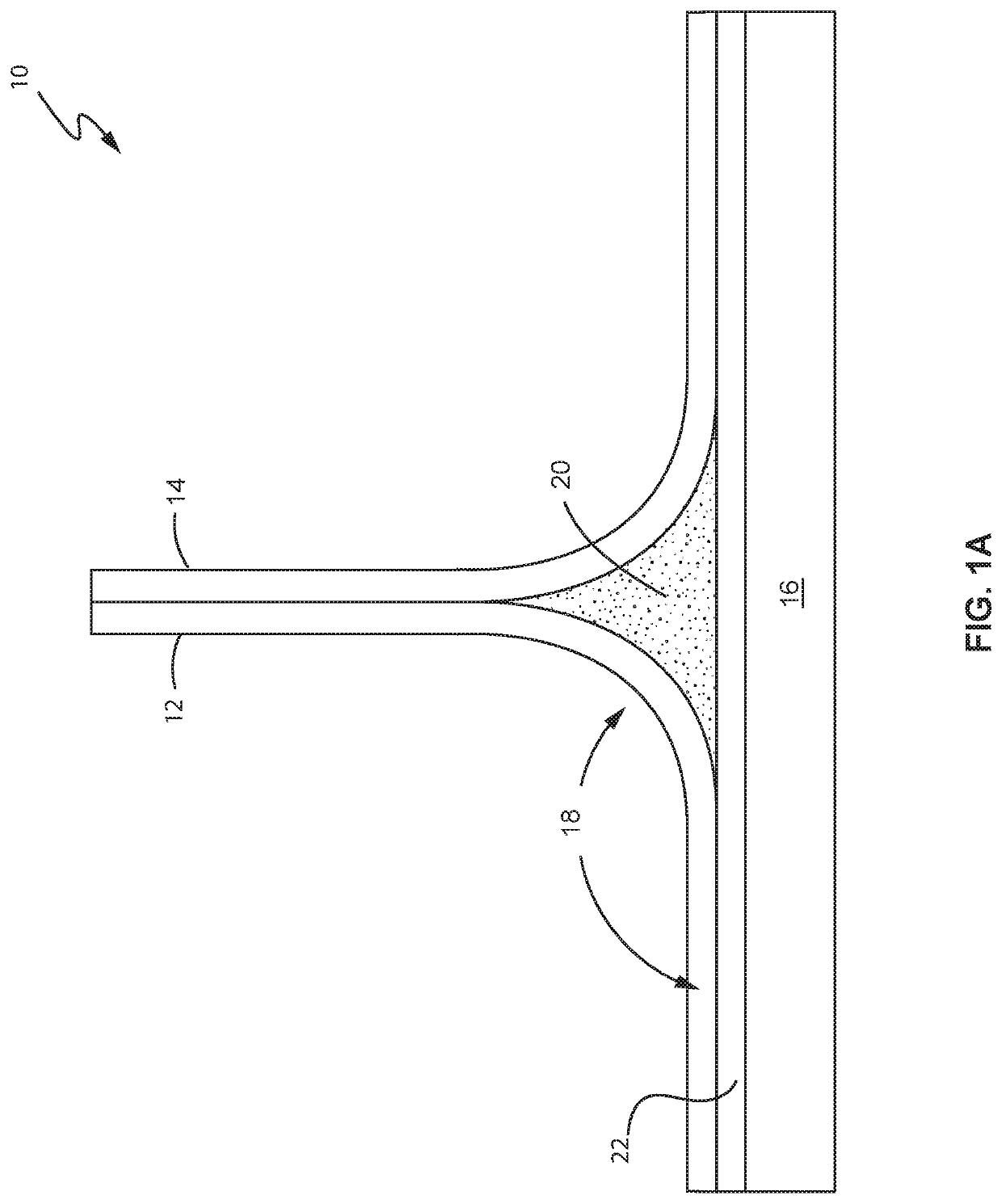Method for Determining Noodle and Interface Residual Stresses and Properties Under Hygrothermal-Mechanical Loadings
- Summary
- Abstract
- Description
- Claims
- Application Information
AI Technical Summary
Benefits of technology
Problems solved by technology
Method used
Image
Examples
Embodiment Construction
[0043]Aspects of the present disclosure configure a computer to model the effects of initial and residual stresses and loads exerted on a composite or adhesive filler material, such as a “noodle,” for example, disposed at a connection interface of a load-bearing composite structural component (e.g., “stringers,” and “spars”) and the structural framework of a vehicle. By modeling the stresses and loads, aspects of the present disclosure configure the computer to predict the progressive creation, density, and spacing, of cracks that can appear in such filler materials as a result of such stresses and loads.
[0044]In more detail, cracks appear at the connection interfaces (e.g., in the noodle), usually progressively, due to the amount and types of stresses and loads that are exerted on the connection interface. The stresses particularly include the initial and residual stresses exerted on the filler material at connection interface due to the curing process during the manufacture of the...
PUM
 Login to View More
Login to View More Abstract
Description
Claims
Application Information
 Login to View More
Login to View More - R&D
- Intellectual Property
- Life Sciences
- Materials
- Tech Scout
- Unparalleled Data Quality
- Higher Quality Content
- 60% Fewer Hallucinations
Browse by: Latest US Patents, China's latest patents, Technical Efficacy Thesaurus, Application Domain, Technology Topic, Popular Technical Reports.
© 2025 PatSnap. All rights reserved.Legal|Privacy policy|Modern Slavery Act Transparency Statement|Sitemap|About US| Contact US: help@patsnap.com



